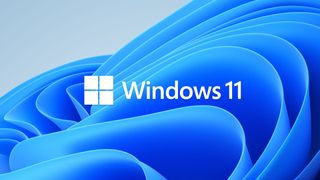Windows 11: What does it mean for your business?
Windows 11 offers a variety of new features that business users will celebrate

After weeks of speculation, Microsoft has finally unveiled its new Windows 11 operating system (OS), which is available soon in early-access and will roll out to the public in winter.
Beyond a sleek and curvaceous aesthetic, reorganized start menu and new-look taskbar, Windows 11 also offers a number of new features that business users in particular will welcome.
The new OS has clearly been optimized for hybrid working, whereby employees split their time between the home, office and anywhere else, with options that will help users more easily multi-task and pick up where they left off.
- Check out our list of the best office software right now
- Here's our list of the best productivity software available
- We've built a list of the best project management software out there
According to Microsoft, Windows 11 also sets a new benchmark for performance and security, which will help businesses optimize for productivity and shield employees against an ever-changing roster of cyberthreats.
“Windows has always existed to be a stage for the world’s innovation. It’s been the backbone of global businesses and where scrappy startups became household names,” said Panos Panay, Chief Product Office at Microsoft.
“Windows 11 is built on the consistent, compatible and familiar Windows 10 foundation you know. And we can’t wait to see what it empowers people to do and inspires them to create."
Collaboration and productivity
One of the main focuses during the Windows 11 launch event was a new level of interoperability with collaboration platform Teams. Microsoft revealed that Teams will be built directly into the core of Windows 11, dealing a serious blow to video conferencing service Skype, acquired by the company for $8.5 billion in 2011.
Are you a pro? Subscribe to our newsletter
Sign up to the TechRadar Pro newsletter to get all the top news, opinion, features and guidance your business needs to succeed!
In Windows 11, users will be able to launch directly into Teams chats and meetings with a single click or touch, via an icon that takes a front-and-center position in the taskbar. The new system tray will also host a mute button for easy access, addressing one of the most common pandemic faux pas.
Microsoft also took time to set out a series of upgrades designed to help users maximize productivity at work. For example, Windows 11 offers a new feature called Snap Layouts, which gives users a greater range of orientation options when multitasking across multiple windows or applications.

When reconnecting a laptop or tablet to an external monitor, meanwhile, a feature called Snap Groups can be used to restore all windows to their previous location and orientation, making it easy to jump straight back in.
“These are new features designed to help you organize your windows and optimize your screen real estate so you can see what you need just the way you want in a layout that’s visually clean,” Microsoft explained.
Performance and security
Windows 11 promises to be the most performant and secure Microsoft OS to date, qualities that will top the priority list for any business.
Although Microsoft has not provided hard data, the company says Windows 11 boot times are significantly faster, and so is authentication service Windows Hello. Browsing the web is also said to be much snappier, and not just on Edge.
The new OS reportedly uses less energy too, which should translate to longer battery life when employees are working on their travels.
Microsoft also took time to highlight Windows 11’s security credentials, with new protections added at a chip and cloud level.
“Key security features like hardware-based isolation, encryption, and malware prevention are turned on by default. We have also made going passwordless easier by simplifying the steps to deploy Windows Hello for Business,” said Microsoft.
“And all these components work together in the background to keep users safe without sacrificing quality, performance or experience.”
The company has also set out new hardware requirements designed to raise the minimum security baseline across all devices running the OS. However, the potential sticking point here is that not all Windows 10 devices in a business’ fleet will qualify for the Windows 11 upgrade, even including some newer devices.
Microsoft Store
Microsoft rounded out the Windows 11 launch event with a look at a redesigned version of the Microsoft Store, which has been revamped with a new UI and optimized to make app discovery easier.
Perhaps most importantly, though, the company announced it will open the store to a much wider range of third-party apps, potentially opening up new opportunities for small businesses and individual creators.
The new Microsoft Store will welcome apps built on any framework, including Win32, .NET, UWP, Java and Progressive Web Apps. It will even support Android apps, albeit only those hosted on the Amazon Appstore.

Microsoft also delivered an implicit but pointed jab at the infamous Apple tax, revealing that developers will be able to integrate their own ecommerce solutions into Microsoft Store apps and keep 100% of the revenue. Alternatively, they can make use of Microsoft’s solution, in exchange for a 15% cut.
A preview of the new Microsoft Store will be available to Windows Insiders soon, across both Windows 10 and 11 builds.
Until Windows 11 is made available, Microsoft’s word is all there is to go on. However, early signs suggest there is plenty for businesses to be excited about, from features that support new ways of working to additions designed to keep employees secure, no matter their location.
The transition between Windows 10 and 11 should also be relatively painless for IT administrators, with Microsoft maintaining a level of consistency across various Windows management tools, such as Endpoint Manager and Windows Update for Business.
If Microsoft is able to deliver on its promises, Windows 11 should deliver value to businesses of all sizes and across industries, as they look to capitalize on new opportunities in the post-pandemic landscape.
- Here's our list of the best mobile workstations right now

Joel Khalili is the News and Features Editor at TechRadar Pro, covering cybersecurity, data privacy, cloud, AI, blockchain, internet infrastructure, 5G, data storage and computing. He's responsible for curating our news content, as well as commissioning and producing features on the technologies that are transforming the way the world does business.
